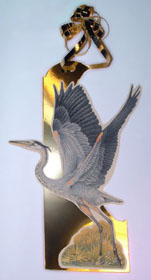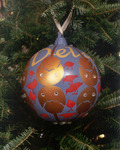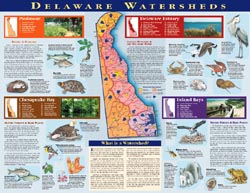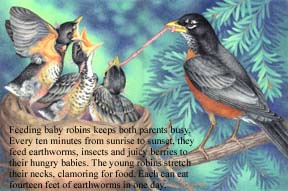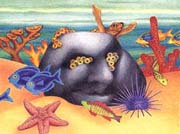
 About Nancy  Writing & Illustration  School Programs  Workshops & Lectures  Kid's Page |
Writing and Illustration |
 Birdsong Books  Order Books  White House Christmas  Contact Nancy  HOME |

Anticipation, 
Old Fashioned Flags, 
All A'Buzz, 
Zebras and Zinnias, |
||
|
The Animals' Winter Sleep Clear rhyming text paired with large-scale, beautifully-detailed colored pencil illustrations describe how 13 North American animal species survive the winter snows snug inside their dens, nests, burrows and lodges. Peek inside each winter home for a close-up view. Then locate all of the homes together on the final panoramic illustration. Two educational pages provide additional species information, depict animal tracks in the snow, and ask questions designed to encourage children to look for details in the pictures. See What the Reviewers Say |
||
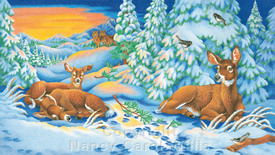 |
|
|
|
|
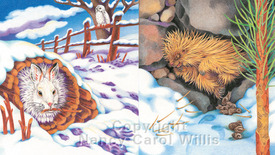 |
|
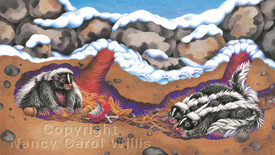 |
|
|
|
Red Knot |
|
|
Four pages of additional information include a range map, glossary, timeline, shorebird relatives, banding information, and history and conservation of Red Knots. The Red Knot in our book wears a lime-green flag with the letters "ALX." Nancy chose those letters for her dog, Alex. She then learned ALX was an actual Red Knot that was banded in Delaware Bay on May 14, 2004 weighing 115 grams. ALX was sighted wintering in Tierra del Fuego and again in Delaware Bay during May, 2005 and 2006. On May 17, 2007, ALX was photographed by Patricia M. Gonzalez at Fortescue Beach, NJ. On May 21, 2008, ALX was spotted on Fowler Beach and later in Mispillion Harbor, DE. Let's hope we see him again next year!! See What the Reviewers Say |
|
|
|
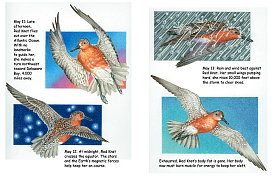 |
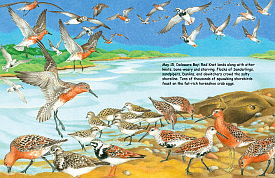 |
I'd like to see more Red Knot |
Racoon Moon
|
|
|
Join the cubs as they learn to climb a tree, take a swim and escape dangerous predators. Follow them as they forage along stream banks, through cornfields and into a garbage can. With winter coming, the raccoons must double their body weight. Will they survive until the spring raccoon moon? Teachers and parents will applaud the glossary raccoon facts and trivia, and the hints on helping orphaned or injured baby raccoons. See What the Reviewers Say |
|
|
"With his belly full, Rusty wants to play. He lies in wait, then jumps on Spice. They roll and tumble, nip and growl. Rudy grabs his brother's tail, and they chase each other, squealing. What looks like a fight is really a game. By snarling and snapping, the cubs learn how to defend themselves from predators." |
 |

|
"A crescent moon shimmers in the hazy August sunset. Now four months old, the cubs are weaned and no longer depend on their mother's milk. Rudy and Spice rip the ears of corn from the stalks. Rusty tears away the husk and devours the plump, yellow kernels. He can eat five pounds of food a night. If they are to survive the winter, the cubs must double their body weight before cold sets in." |
|
I'd like to see more Raccoon Moon |
|








